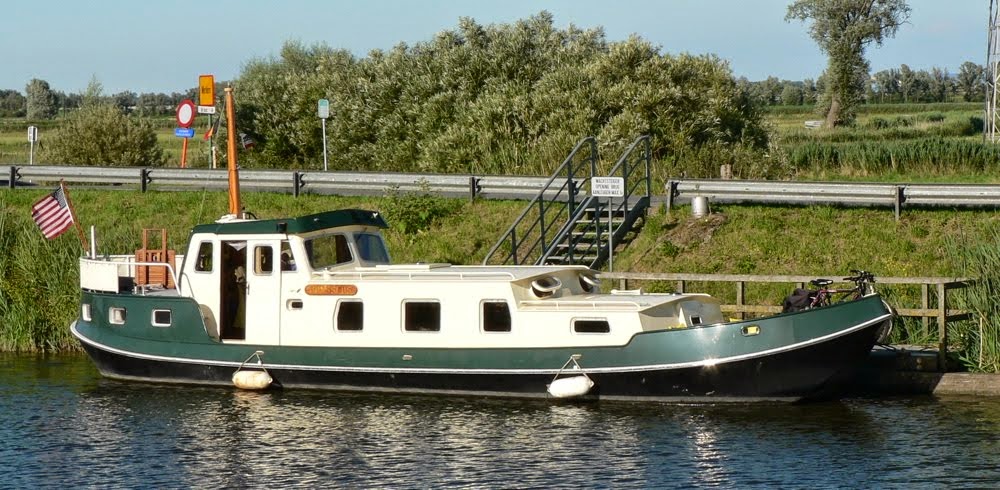It was a good thing we made our bike trip on Saturday because we got up Sunday morning to more rain and wind. Luckily, Odysseus has an inside steering station so we wouldn't have to get cold and wet between locks but we did have 13 to do on Sunday. Luckily they were all pretty close together and, with an hour out for lunch, we'd finished them by about 2:30. About 3:30 we left the Saare Coalfields Canal and reentered the Canal de la Marne au Rhine, completing the loop we'd begun back at the beginning of the month.
We spent Sunday night tied up just before the giant lock at Rechicourt in the rain. (See the post about our previous visit here about a third of the way down the page.)
It again took quite a bit of time to negotiate the lock. We weren't in a big hurry, a hotel barge was coming up and so we didn't get through until about 1130. 6 locks later, at about 3 pm, we were tied up in Lagarde, where Odysseus will spend the winter.
Navig France, a hireboat company, has it's very active base at Lagarde. The owners, Jacques Lucas and Patrice Yax, are really building an empire here. Patrice has a nice guesthouse a couple of kilometers away and they are in the process of building a restaurant just across from where Odysseus is in the picture.
I mentioned earlier that Lagarde is out in the middle of nowhere; McNight calls it "intensely rural." This time, instead of being on one of the pontoons, as you can see we were tied to the bank, making it much easier to do the maintenance tasks we wanted to complete before we locked the boat up for the winter. It also gave us a great view of the horse corral right across the towpath.
There is also a Michelin starred restaurant in the nearby village of Languimberg, Chez Michele. We thought we deserved a night out; our first Michelin star.
We had asked Patrice to make a reservation for us for Friday night; since it's a ways away, a member of the restaurant staff will come and pick you up and return you to the marina. The appointed time came and we sat forlornly waiting for the car to arrive. Patrice drove up with a group of people he was taking out on one of the boats for the weekend. I asked about the reservation and his face fell. He'd forgotten to call. He said, "No problem, I'll take you!" We said, "Without a reservation?" He says, "Pas de problem!" Off in the car we go. We show up with our smiling faces about 8pm and the Madame looks us up and down, seats us and then proceeds to ignore us for about 20 minutes. Luckily, we think they had a couple of cancellations so we were able to eat. The meal was very good, surprisingly reasonable and we think we had five desserts!
We made the trip into Luneville, the closest big town, to rent a car on Wednesday, and by Sunday had completed our painting, cleaning and winterizing. We still had a week before our flight left for home from Switzerland so Monday late morning we were off for a little sightseeing in Germany.



















































